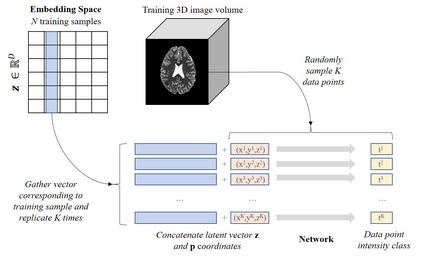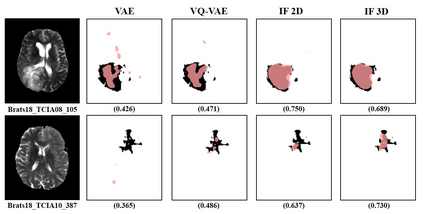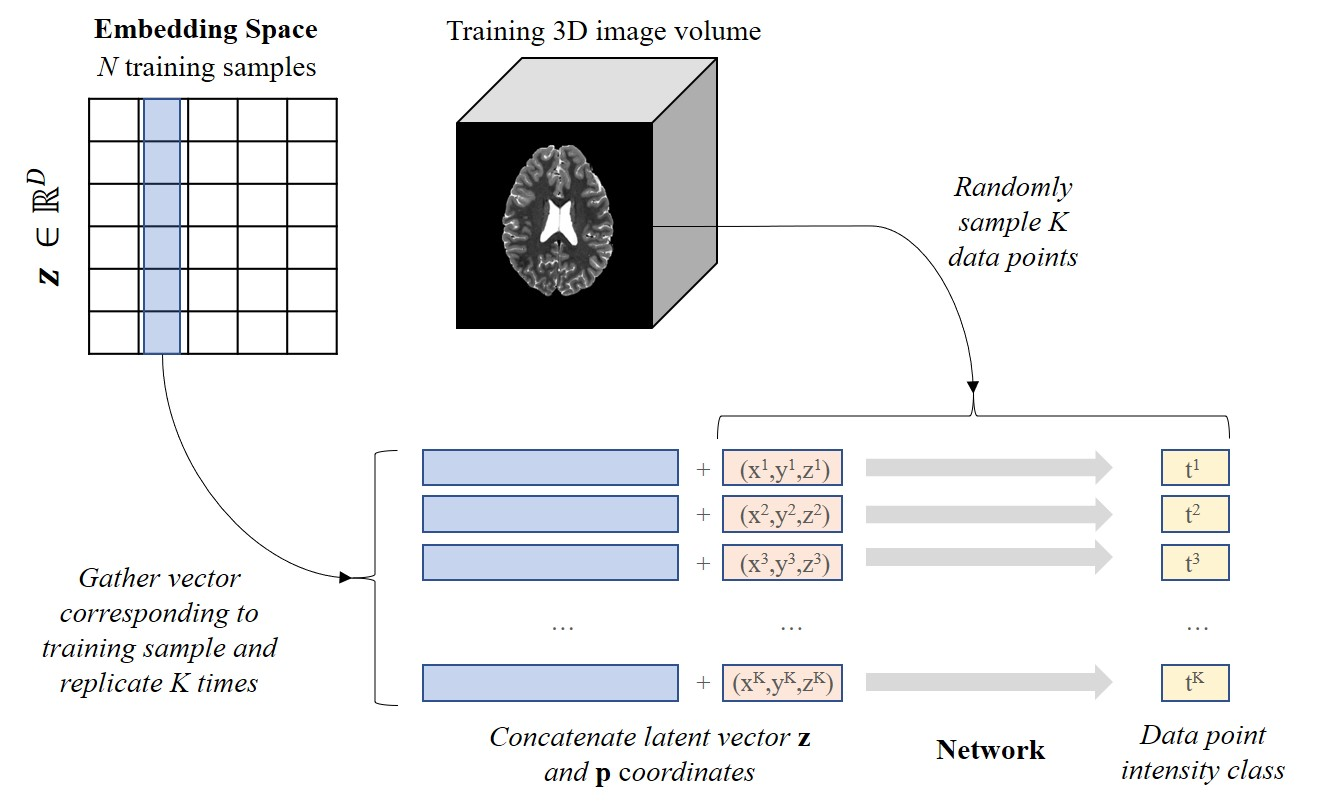We propose a novel unsupervised out-of-distribution detection method for medical images based on implicit fields image representations. In our approach, an auto-decoder feed-forward neural network learns the distribution of healthy images in the form of a mapping between spatial coordinates and probabilities over a proxy for tissue types. At inference time, the learnt distribution is used to retrieve, from a given test image, a restoration, i.e. an image maximally consistent with the input one but belonging to the healthy distribution. Anomalies are localized using the voxel-wise probability predicted by our model for the restored image. We tested our approach in the task of unsupervised localization of gliomas on brain MR images and compared it to several other VAE-based anomaly detection methods. Results show that the proposed technique substantially outperforms them (average DICE 0.640 vs 0.518 for the best performing VAE-based alternative) while also requiring considerably less computing time.
翻译:我们提议了一种基于隐含字段图像显示的医学图像不受监督的新颖的分布外检测方法。 在我们的方法中,一个自动解码器 feed-front-forward 神经网络以空间坐标和概率之间的映射形式,通过组织类型的代理体的概率来学习健康图像的分布。在推断时间里,所学到的分布方法被用来从给定的测试图像中检索一个恢复,即一个与输入输入最一致但属于健康分布的图像。异常点使用我们恢复图像模型预测的异异种概率是本地化的。我们测试了我们在大脑MMR图像上对闪光眼进行不受监督的定位的任务中所采用的方法,并将其与其他基于VAE的异常探测方法进行比较。结果显示,拟议的技术大大超越了它们(以最佳功能VAE为基础的替代方法平均 DICE 0.640 vs 0.518 ),同时要求大大缩短了计算时间。








